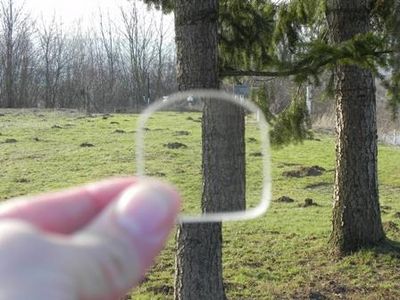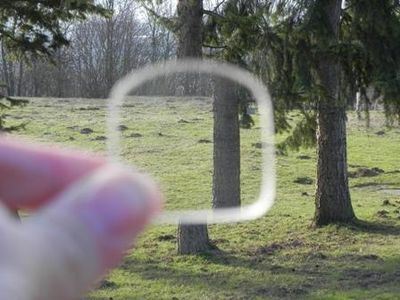Wedge prism
From AWF-Wiki
(Difference between revisions)
| Line 4: | Line 4: | ||
The wedge prism is a small honed glass plate that is used to make an [[Bitterlich sampling|angle count sample]]. You can estimate basal area factors of ½, 1, 2 or 4. | The wedge prism is a small honed glass plate that is used to make an [[Bitterlich sampling|angle count sample]]. You can estimate basal area factors of ½, 1, 2 or 4. | ||
The observer can do an [[Bitterlich sampling|angle count sample]] while he moves around the prism – and the prism is still located at the centre point of the plot. | The observer can do an [[Bitterlich sampling|angle count sample]] while he moves around the prism – and the prism is still located at the centre point of the plot. | ||
| − | + | ||
| − | file:wedge_prism1.jpg| Tree is included in the sample | + | [[file:wedge_prism1.jpg|thumb|400px|Tree is included in the sample]] |
| − | file:wedge_prism2.jpg| Tree is not included in the sample | + | [[file:wedge_prism2.jpg|thumb|400px|Tree is not included in the sample]] |
</gallery> | </gallery> | ||
{| class="wikitable" | {| class="wikitable" | ||
Revision as of 11:19, 13 June 2012
| sorry: |
This section is still under construction! This article was last modified on 06/13/2012. If you have comments please use the Discussion page or contribute to the article! |
General description and handling
The wedge prism is a small honed glass plate that is used to make an angle count sample. You can estimate basal area factors of ½, 1, 2 or 4. The observer can do an angle count sample while he moves around the prism – and the prism is still located at the centre point of the plot.
</gallery>
| Advantages | Disadvantages |
|---|---|
| independence of power sources (no batteries needed) | no digital storage of measurement results available. |

